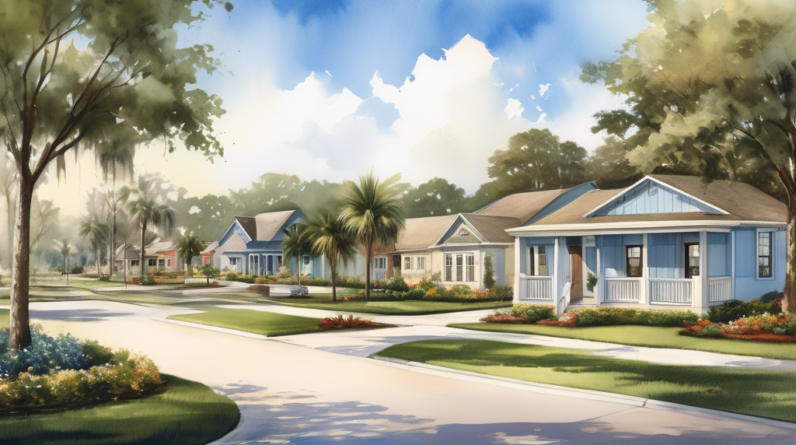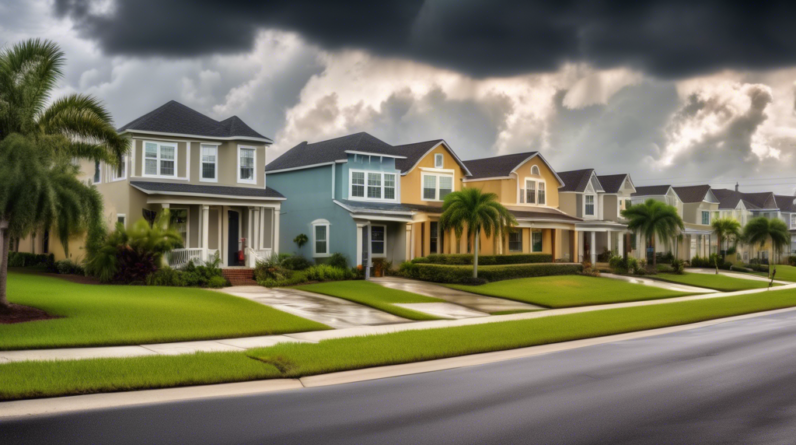Impact of Hurricane Helene on Florida Homeowners
In recent times, Hurricane Helene has emerged as a formidable adversary for Florida homeowners, already grappling with climbing insurance costs. The catastrophic event has resulted in extensive damage, with estimated private insurance losses reaching an alarming $6 billion, according to reports by the global reinsurance broker, Gallagher Re. The hurricane has tested the resilience of both properties and the insurance framework, highlighting the vulnerabilities within the system.
Rising Insurance Costs and Premiums
Florida homeowners are no strangers to financial strain, having experienced a 45% surge in insurance rates from 2017 to 2022, as conveyed by the Florida Policy Project. This hike in premiums has placed a heavy financial burden on residents, exacerbated by the aftermath of natural disasters like Hurricane Helene. The rising costs are squeezing homeowners financially, prompting concerns across various communities.
Comparative Analysis of Average Insurance Premiums
The average annual insurance premium for a homeowner in Florida currently stands at a daunting $5,500. This figure is starkly higher than the national average in the U.S., which is approximately $2,285, as noted by Bankrate. This discrepancy underscores the particular challenges faced by Florida residents, who pay about 140% more in insurance premiums compared to their counterparts across the country.
Challenges in the Florida Insurance Market
The exorbitant premiums have led some Florida residents to reconsider their insurance needs, with some opting out completely due to unsustainable costs. There are reports of homeowners being charged unprecedented rates, as high as $20,000 annually, which further highlights the strain and the broader market instability affecting the state’s insurance landscape.
Frequency and Cost of Natural Disasters
Extreme weather incidents are increasing—not only in frequency but also in their potential for destruction. This trend contributes significantly to the rising costs and complexities of the property insurance market in Florida. As natural disasters become more common and severe, the market faces mounting difficulties in managing risk and providing affordable coverage to homeowners.
Regulatory and Legislative Interventions
In response to these challenges, there have been concerted efforts to stabilize the insurance market. A notable measure includes the increase in policyholder inspections, which have been a financial boon for insurers like Citizens Property Insurance Corp. since 2022. These inspections are part of broader regulatory strategies aimed at mitigating costs and enhancing market stability.
Structural Inspection Reports for Condos
Structural inspection reports for condominium associations are gaining attention for their role in safeguarding against unforeseen expenses. These reports are vital for both buyers and sellers, providing crucial insights that can help navigate potential costs and avoid costly mistakes in the sometimes volatile real estate market of Florida.
Broader Context in the Housing Market
Beyond the direct impacts of rising insurance premiums and natural disasters, the Florida housing market is influenced by a variety of factors. Interest rates play a significant role, affecting mortgage costs and housing affordability. Additionally, the competitiveness of rental markets is continuously shaping real estate trends, with many Floridians seeking refuge from exorbitant homeowners’ expenses. In this complex ecosystem, the synergy of these forces drives the dynamic but challenging landscape of Florida’s housing market.







